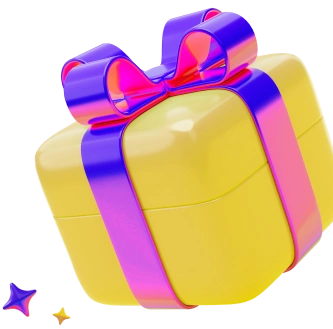Hyperbole is a literary medium in which certain information, feeling, or other expression is exaggerated intentionally, in order to create a certain effect. In most cases, the literal interpretation of hyperbole in literature may not be factually correct, but exaggeration serves to emphasize a certain point. For example, in the sentence: "I have a million things I have to do today," hyperbole serves to express that the author has a lot of work to do, but it is unlikely that a person is actually able to complete a million tasks in one day. Hyperbole in literature can also be used sarcastically or for the sake of humor, although it is usually used to emphasize a certain moment or action.
In prose, hyperbole is used to emphasize an accent or for humor. If the author wants to express a certain opinion, he can express it by exaggerating. Hyperbole in literature can be used in descriptions, for example, to emphasize some particularly striking character trait. It can be used to describe an action that is in some way the most noticeable, and it needs to focus the reader's attention on it. In both cases and in other similar cases, hyperbole in literature is used to emphasize a special action, feeling, and it does not need to be taken literally.
Most often, in literature, hyperbole relies on images that can be quite humorous. This is especially noticeable when hyperbole is used only for the purpose of focusing the reader's attention on a humorous image. For example, in one of the works there is this kind of hyperbole: a person's fingers are described as Italian sausages. The purpose of this use of hyperbole may be to comment on the size of a person's fingers, and here comes a humorous depiction of a person with a comparison with thick, short, sausage-like fingers. Therefore, writers who use hyperbole should know perfectly the images they rely on, especially if they do not want to give their image as a joke.
Hyperbole is also widely used in poetry. As in prose, it is used to draw the reader's accent to the poem, but most often it is used in humor. Hyperbole can also be used to emphasize contrast. If one idea is exaggerated while the other is downplayed, the result is an accent of contrast between the two. This style is especially common in poetry, where the author seeks to explore two opposing ideas.
Hyperbole is used in poetry to enhance emotion and is intended not to be official. This means that the statements made are exaggerations, but are not metaphors. For example, a poet wants to declare his love for a lady. In the poem, he could say that he loves her more than anyone else he knows, but would use hyperbole to say, “I love you more than anything in the world.”Although in reality the poet has not experienced everything in the world, nor will he meet every woman in the world, and thus he cannot be absolutely sure of his speech.
In the course of this work, theoretical the basics of describing a hyperbola, namely, various approaches to the definition hyperbole, its interaction with other stylistic devices, and also the cognitive aspect of hyperbole. Multilateral consideration the concept of «hyperbole» led to the conclusion that in linguistics under it understands the stylistic figure of the obvious and deliberate exaggeration, in order to enhance expressiveness. The work deeply considers various classifications of hyperbolas, and also means of hyperbole. Moreover, various types of fairy tales, as well as their main features and features.
Hyperbole is a literary device in which certain information, feeling or other expression is deliberately exaggerated in order to create a certain effect. In most cases, the literal interpretation of the hyperbole in the literature may not be factually correct, but the exaggeration serves to emphasize a particular point. For example, in the sentence «I have a million things to do today», hyperbole is used to express that the author has a lot of work to do, but it is unlikely that a person is actually capable of completing a million tasks. in a day. Hyperbole in literature can also be used sarcastically or for the sake of humor, although it is usually used to emphasize a particular point or action.
In prose, hyperbole is used to emphasize emphasis or for humor. If the author wants to express a certain opinion, he can express it exaggerating. Hyperbole in literature can be used in descriptions, for example, to emphasize some particularly striking character trait. It can be used to describe an action that is most prominent in some way and needs to be brought to the attention of the reader. In both cases, and in other similar cases, hyperbole in the literature is used to emphasize a particular action, feeling, and is not to be taken literally.
Most often, in literature, hyperbole relies on imagery that can be quite humorous. This is especially noticeable when hyperbole is used only for the purpose of focusing the reader's attention on a humorous image. For example, in one of the works there is this kind of hyperbole: human fingers are described as Italian sausages. The purpose of this use of hyperbole may be to comment on the size of a person's fingers, and here comes the humorous depiction of a person with comparison to thick, short, sausage-like fingers. Therefore, writers who use hyperbole must know perfectly the images they rely on, especially if they do not want to make their image look like a laughing stock.
Various types of hyperbolas were studied and their analysis was carried out on an example of Russian-language and English-language author's fairy tales. It allowed to conclude that in the Russian fairy tales I have considered, hyperbole has a more «social» and deeper character, since it affects acute problems of human society. In fairy tales in English hyperbole is used to give liveliness, brightness to the described, for creating an atmosphere of magic and unusualness, which is inherent in magical fairy tales.
The results of this study can be a starting point for a wider and deeper study of hyperbole in author's fairy tales, as in Russian, and in English, since the study of hyperbole in practically not carried out in this direction. In the course of the work, all tasks were completed. An analysis of the texts of fairy tales helped to come to the conclusion that hyperbole is successfully used to give a description of liveliness and brightness.
Having studied the texts of these works, we can conclude that the fact that the hyperbole of Saltykov-Shchedrin's fairy tales has a more «social» character - they vividly and figuratively describe the problems of Russia in the 18th century. - the attitude of the landowners towards the simple peasant, slavish obedience the last one. Hyperbolas are bright / catch the eye of the reader, often used in conjunction with grotesque and repetition. In English fairy tales this means of expression serves to create an atmosphere strangeness and magic. Hyperbolas are built mainly on use of adverbs and adjectives in the superlative degree, used in conjunction with repetition. The frequency of use of hyperbolas is approximately is the same in both Russian and English fairy tales.
It is no coincidence that hyperbole attracts the attention of researchers. This is explained, first of all, by the general interest in the study of the text in a broad sense, i.e., the study of all functional stylistic varieties of literary language, as well as colloquial style, the study of the language of fiction, the desire to define various stylistic techniques that create the expressiveness of the text. In addition, researchers are attracted to questions concerning the expressiveness of language and speech. In modern conditions of analysis, facts are examined not in isolation, but in context, since it is in the context that words acquire meaning.







